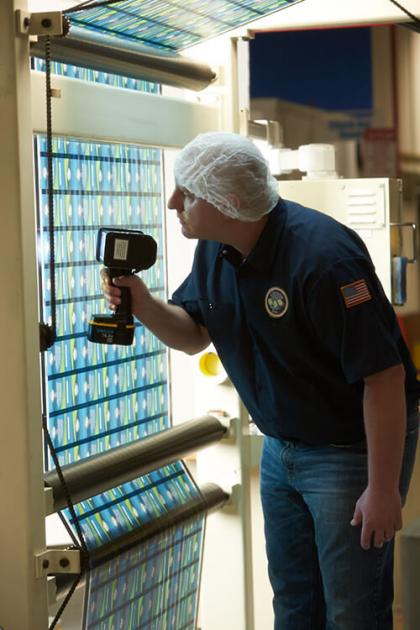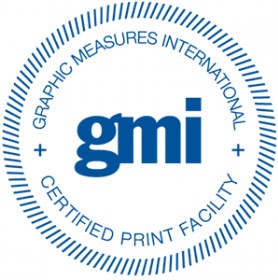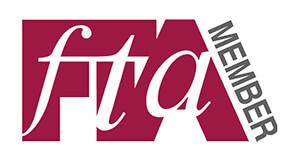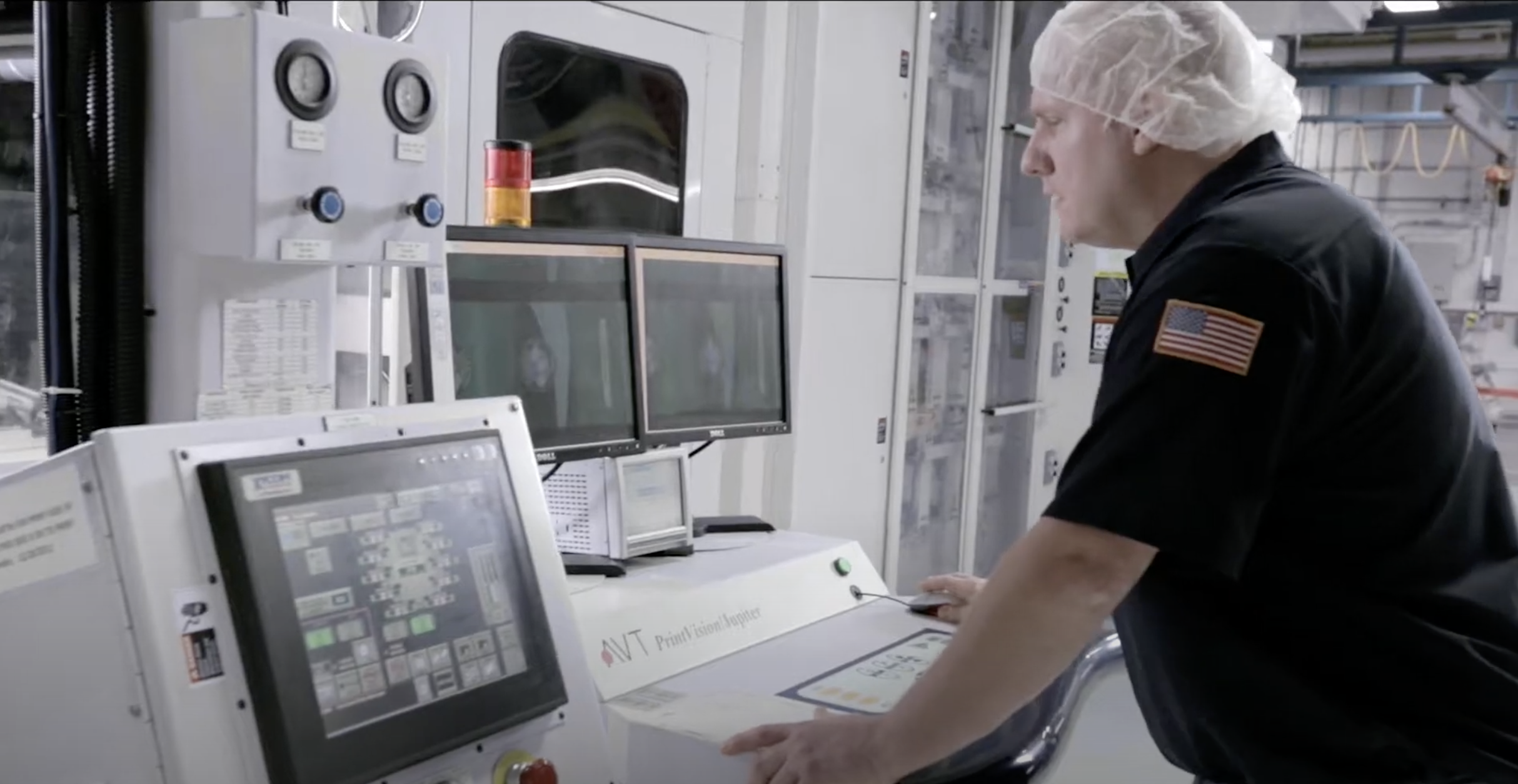Flexographic Printing
Flexographic Printing

Reflect the high quality of your products with our high-fidelity 10-color flexographic printing. Our printing expertise has earned over 100 flexographic printing awards.
Your flexible packaging will be printed by knowledgeable press operators that have an average of 20 years’ or more experience in flexographic printing. We offer both solvent-based inks and water-based inks, and provide a wide range of capabilities and technology:
- Award-winning 10-color central impression flexographic printing
- Reverse and surface printing up to 48″ wide
- Advanced plate mounting equipment with microdot system capability for accurate registration
- Inline defect detection system
- Gravure coating
- Accurate bar code printing
- Sophisticated ink blending systems
- Accurate in-house custom color matching
- Spectro-densitometer color control
- Ability to print digital watermarking
What is reverse printing?
Reverse printing is the process of printing on the back side of a clear substrate, sometimes referred to as subsurface printing, with a reverse image. In the process of manufacturing flexible packaging the print will be buried between the outside substrate and the rest of the structure, offering scuff and chemical resistance. When the outer substrate is mounted to the remainder of the structure, it will be right reading.Non-rigid packaging structures used to package and protect products. According to the Flexible Packaging Association, flexible packaging is any package or any part of a package whose shape can be readily changed. Common examples of flexible packaging are bags and pouches.
What is the difference between flexographic printing and rotogravure printing?
Flexographic printing is the method of printing on a web press using rubber or photopolymer plates with raised images. Rotogravure printing does not use plates, rather the image is etched directly onto a cylinder. It can be distinguished when looking through a loupe - it has teeth like marks around type and solids.
What kind of ink systems does Glenroy use?
Glenroy uses solvent based, pigment inks.
What is ink viscosity?
Viscosity describes a fluids resistance to flow. In everyday terms, viscosity is the thickness. A liquid with a low viscosity, such as water, would be considered thin. A liquid with a high viscosity, such as honey, would be considered thick. Ink viscosity refers to this resistance of the ink.
What is Delta E?
Delta E is a color tolerance measurement. It is the measurement of a “sample” color compared to a “reference” color and uses a color difference equation to find the value. Glenroy uses the DE2000 equation for our measurements.
What is GMI?
GMI, Graphic Measures International, monitors and measures the performance of packaging suppliers. They assist brand owners control the variables through print facility certification and scientific, repeatable measurement of global packaging.
Are you GMI certified?
Yes, Glenroy has gone through the GMI audit process and is a certified print packaging supplier.
How do I submit a graphics file?
- Click here to upload graphics using our ftp upload application.
- You may email graphics files to us at graphicsmail@glenroy.com. We recommend compressing/zipping files prior to sending. When sending files via email, please include a pdf of the artwork.
- We can retrieve art from external FTP sites. Please email us information needed to retrieve the files, along with a pdf of the artwork.
Where can I find Glenroy’s graphic specifications?
What is a press approval?
How do I arrange a press approval?
At the beginning stages of your project, you may contact your Glenroy representative to arrange for a press approval.
What is a plate break?
What is a cover plate?
What is an eyespot and an eyespot tracking path (or channel)?
An eyespot tracking path (or channel) is a pathway between the eyespots that the eyespot reader is tracking. Generally this pathway should be clear of obstructing design or text.

Environmentally-conscious Printing
In addition to offering water-based inks, we strive to protect our environment by recycling solvents and printing plates used in the printing process. Over 98 percent of volatile organic compounds are captured and destroyed using catalytic and regenerative thermal oxidizers.

Award-winning Flexographic Printing
Amongst the more than 100 flexographic printing awards Glenroy has won, our printing capabilities have earned prominent awards such as FTA Excellence in Flexography Gold and “Best of Show” Awards, and Printing Industries of America Premier Print Awards.

GMI Certified Printing Facility
Glenroy, Inc. is a Graphics Measures International (GMI) Certified Print Facility. As a global leader in packaging quality services, GMI certifies, monitors and measures the performance of designated packaging suppliers—a process that holds them accountable to established brand owner standards. GMI helps control the variables and ensure brand integrity through printer certification, production run sample measurement, and in-store packaging assessments.



